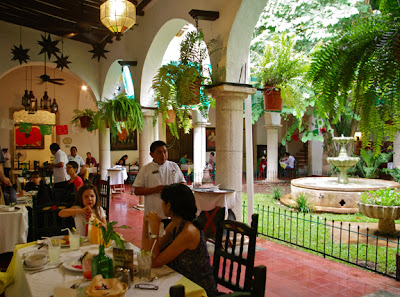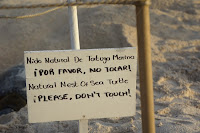 |
| Puffin on the Latrabjarg Cliffs |
A recent 12-day photo tour (Around Iceland, Iceland Photo
Tours, www.phototours.is) convinces me that Iceland fits the bill for a small,
not-too-distant place that offers many and varied great sights. It is an
attractive destination whether you're concerned with efficiency or not and
regardless of your level of commitment to photography. Our tour took us to the far corners of Iceland, including
many sites that most tourists wouldn't know of, couldn't reach, or both. Most of these attractions were natural in
some sense, though functioning or derelict buildings added to the variety.
 |
| Glacier Lagoon, Iceland |
 |
| Hraunfossar Waterfalls |
What else did we see?
For the most part, think water, fire and ice. Given the frequent rain, you may not be
surprised to learn that much of our time was spent viewing some of Iceland's
many impressive waterfalls. One of my
favorites was Hraunfossar, not far from Reykjavik. This is a series of "lava waterfalls"
that are strung out for some distance and incorporate much variety on their own. Many of the
waterfalls were extremely powerful, though I found myself especially attracted
to the smaller falls or rapids, usually a bit downstream of the main falls.
 |
| Lake Myvatn Thermal Area |
At this point, I'm sure that you're thinking that all of
this water might come in handy if the volcanoes and other thermal areas that
Iceland is famous for were to spiral out of control. Until this happens, however, Iceland's
thermal areas enrich the landscape with volcanoes, other unusual landforms,
steam, and lots of color. We made three visits to the Lake Myvatn thermal area
and continued to find other parts of it hidden away and offering new
attractions.
 |
| Black Sand Beach |
What do water and thermal activity create when
combined? Well, in Iceland, one of the
products is the wonderful black-sand beaches that line
part of the coast and which are especially impressive when the sea is stormy. In a more
practical vein, the water and thermal activity provide Iceland
with much or all of its electricity, permitting it to avoid many or all of the
financial and climatic costs of reliance on fossil fuels.
Finally, ice. Perhaps
my favorite of all Iceland's offerings were the glaciers and their offspring,
the icebergs that littered the associated glacier lakes or lagoons. Collectively, these icebergs were the
ultimate chameleons: They varied in size, shape and color, and were wonderful
to see in any light or weather. What can
be equally attractive when clear, blue or covered in dirt? I think that you know the answer.
 |
| Derelict House |
Though our travels in Iceland were extensive, one would have
to visit at several times of the year to (a) access all parts of the island,
and (b) see its many attractions under all possible weather and lighting
conditions. I plan to chip away at this on
future trips. The only problem will be
that of avoiding immobilization by indecision about when and where to go next!
You can read about some of Owen's other photographic journeys in his posts of May 6, 2013 Tanzania: African Wildlife Up Close; and May 20, 2013 Nepal: Shrines, Temples and Breathtaking Scenery.
You can read about some of Owen's other photographic journeys in his posts of May 6, 2013 Tanzania: African Wildlife Up Close; and May 20, 2013 Nepal: Shrines, Temples and Breathtaking Scenery.






















